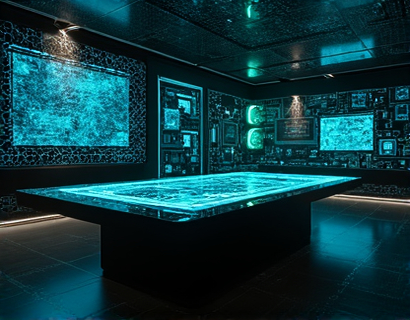Unlocking Ancient Wisdom: A Deep Dive into Historical Insights and Cultural Heritage for Modern Audiences
Embarking on a journey through the annals of time, one can uncover the profound wisdom and cultural treasures of ancient civilizations. This comprehensive guide serves as a bridge between the past and the present, offering a unique perspective that enriches the understanding of history enthusiasts and cultural heritage seekers. The aim is to delve deep into the historical insights and cultural legacies that continue to resonate with modern audiences, providing a rich tapestry of knowledge that transcends epochs.
The study of ancient civilizations is not merely an academic pursuit but a vital endeavor that informs and enriches our contemporary world. From the monumental architecture of the Egyptians to the philosophical musings of the Greeks, each civilization has left an indelible mark on human culture and thought. This exploration will traverse various ancient societies, highlighting their contributions and offering insights that remain relevant today.
Ancient Egypt: A Land of Mystique and Innovation
One of the most enigmatic and influential civilizations is that of Ancient Egypt. Known for their monumental architecture, the Egyptians built structures that have stood the test of time, such as the Pyramids of Giza and the temples of Karnak. These architectural marvels are not just testaments to their engineering prowess but also reflect their deep spiritual and religious beliefs.
The Egyptians were pioneers in many fields, including medicine, mathematics, and astronomy. Their medical texts, such as the Ebers Papyrus, contain treatments for various ailments, showcasing an advanced understanding of human anatomy and disease. Mathematically, they developed a decimal system and calculated the value of pi with remarkable accuracy for their time. Astronomically, they meticulously tracked celestial bodies, creating a calendar that was remarkably precise.
Beyond their practical achievements, the Egyptians left a rich legacy of art and literature. The Book of the Dead, a collection of spells and prayers, provides insight into their beliefs about the afterlife. Artistic representations, from the intricate hieroglyphs to the serene sculptures, offer a window into their aesthetic sensibilities and cultural values. These artistic expressions continue to inspire and captivate modern audiences, serving as a bridge between ancient and contemporary cultures.
Ancient Greece: Cradle of Western Civilization
Ancient Greece is often hailed as the cradle of Western civilization, a period marked by significant advancements in philosophy, politics, and the arts. The Greeks introduced concepts that form the foundation of modern thought, such as democracy, which was first practiced in Athens. Philosophers like Socrates, Plato, and Aristotle explored profound questions about existence, ethics, and knowledge, shaping Western philosophical traditions.
The Greek legacy in the arts is equally profound. Sculptures such as the Discobolus and the Venus de Milo exemplify the pursuit of beauty and perfection. Theatrical works, including the tragedies of Sophocles and the comedies of Aristophanes, continue to influence modern drama. The Parthenon, a symbol of Athenian democracy and artistic achievement, stands as a testament to their architectural genius.
Greek contributions to science and mathematics are also noteworthy. Euclid's Elements laid the groundwork for geometry, while Archimedes made groundbreaking discoveries in physics and calculus. The Greeks' curiosity and intellectual rigor laid the foundation for the scientific method, influencing scholars for centuries to come.
Rome: Empire and Law
The Roman Empire, at its peak, was one of the most extensive and powerful civilizations in history. Known for their military might and administrative efficiency, the Romans left a lasting impact on governance, law, and infrastructure. The concept of a centralized government and the rule of law, as codified in the Twelve Tables, influenced legal systems worldwide.
Roman engineering prowess is evident in their extensive road networks, aqueducts, and public buildings. The Colosseum, an engineering marvel, hosted grand spectacles and demonstrated the empire's organizational capabilities. Roman architecture, characterized by its use of concrete and arches, has inspired countless structures throughout history.
Culturally, the Romans were adept at assimilating and adapting elements from the civilizations they conquered. Their literature, including the works of Virgil and Ovid, continues to be studied and admired. The Latin language, the lingua franca of the empire, has left a lasting legacy in many modern languages, particularly in the realms of law and science.
Mesopotamia: The Cradle of Civilization
Often referred to as the cradle of civilization, Mesopotamia, located in the fertile crescent between the Tigris and Euphrates rivers, gave birth to some of the earliest known human settlements. The Sumerians, Babylonians, and Assyrians were pivotal in developing urban societies, writing systems, and complex governance structures.
The invention of cuneiform, one of the earliest forms of writing, revolutionized communication and record-keeping. This script was used to document laws, literature, and administrative records, preserving a wealth of historical information. The Code of Hammurabi, one of the earliest known sets of laws, established principles of justice that influenced later legal codes.
Mesopotamian advancements in astronomy and mathematics were also significant. They developed a sexagesimal (base-60) system that influenced the way we measure time and angles. Their astronomical observations and predictions were remarkably accurate, contributing to the development of calendars and the understanding of celestial cycles.
Indus Valley Civilization: A Mysterious Legacy
The Indus Valley Civilization, flourishing around 2600-1900 BCE, is one of the least known but equally fascinating ancient cultures. Located in present-day Pakistan and northwestern India, this civilization is renowned for its urban planning and sophisticated water management systems.
The cities of Harappa and Mohenjo-Daro exhibit a high level of organization, with grid-like street layouts, advanced drainage systems, and public baths. The people of the Indus Valley were skilled craftsmen, producing pottery, jewelry, and seals with intricate designs. Despite the lack of a fully deciphered writing system, archaeological evidence suggests a complex society with trade networks extending to Mesopotamia and beyond.
The Indus Valley Civilization's emphasis on hygiene and urban planning offers valuable insights for modern city design and sustainability. Their ability to manage resources and maintain order in a large urban setting is a testament to their ingenuity and foresight.
Mayan Civilization: Masters of Astronomy and Architecture
The Mayan civilization, centered in what is now Mexico, Guatemala, Belize, and parts of Honduras and El Salvador, was a sophisticated culture that excelled in various fields. Known for their impressive architectural achievements, the Mayans built elaborate cities with pyramids, palaces, and observatories.
Mayan astronomy was remarkably advanced for its time. They tracked celestial bodies with precision, creating calendars that were highly accurate. The Long Count calendar, which began on a date corresponding to August 11, 3114 BCE, predicted the end of a cycle in 2025 CE, a date that garnered global attention.
Mayan mathematics and writing systems were also sophisticated. They used a vigesimal (base-20) system and developed a complex hieroglyphic script. Their texts, inscribed on stelae and codices, provide insights into their religious beliefs, political history, and daily life. The Mayan legacy continues to fascinate modern audiences, inspiring research and cultural interest.
Conclusion: Bridging the Past and Present
The exploration of ancient civilizations reveals a tapestry of wisdom and cultural heritage that continues to inform and inspire modern society. From the monumental architecture of Egypt to the philosophical inquiries of Greece, each civilization has contributed uniquely to the human experience. By studying these ancient cultures, we gain a deeper understanding of our shared history and the values that have shaped our world.
This journey through time underscores the importance of preserving and sharing historical knowledge. As we face contemporary challenges, the insights gleaned from the past can guide us toward more sustainable and equitable solutions. Embracing the legacy of ancient civilizations allows us to honor their achievements while building a brighter future.










































